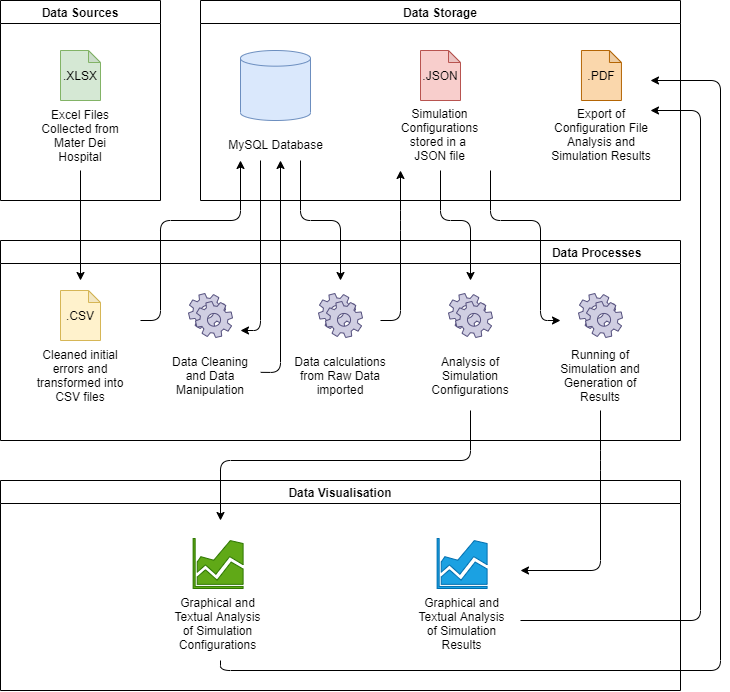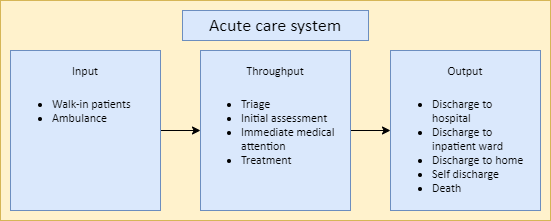Operational research is an important subfield of applied mathematics that provides decision-makers with quantitative information derived from mathematical modelling and statistical analysis. The earliest applications of modern-operations research were to aid decision-making in World War II manoeuvres. Today, it is frequently used over a wide array of industries to analyse and optimise complex systems.

The two major subdisciplines of operational research followed throughout this study were: simulations and stochastic modelling. Computer simulations are models that represent real-life processes and systems, developed in order to analyse how they work. Additionally, these representative models are used to run calculations and make predictions. A stochastic simulation is a special type of simulation, which has variables that change randomly according to the stated probabilities.
In this study, a stochastic model of the operating procedures of the Accident & Emergency (A&E)
Department at Mater Dei Hospital (MDH) was developed to represent the system under study. This representative model was developed through a dataset acquired from the said A&E Department. Extensive data-cleaning was performed on the dataset prior to developing the simulation tool. Once this data-manipulation process was completed, the current configuration of the operating procedures was derived and stored in a JavaScript Object Notation (JSON) file. This JSON file was then used in the main process of the simulation.

The developed tool simulates the input/ throughput/ output model applied to individual patients upon admission to the A&E Department at MDH. Through the use of the pre-calculated probability distributions, the tool determines how many patients are admitted each hour, the duration of each step of their stay and the sequence of steps they follow from admission to discharge.
The purpose of this research is not just to detect flows that could exceed the A&E key performance indicator (KPI) for the discharging of patients, but also to provide medical professionals with a configurable simulation tool, within which proposed changes to the operating procedures of an A&E department could be tested and evaluated. This tool seeks to enable stakeholders to successfully implement the proposed changes to the operating procedures after analysing and verifying their effects, thereby safeguarding the patients’ wellbeing and improving the quality of the healthcare provided.
Student: Marco Attard
Course: B.Sc. IT (Hons.) Artificial Intelligence
Supervisor: Mr Joseph Bonello
Co-supervisor: Dr Michel Camilleri
